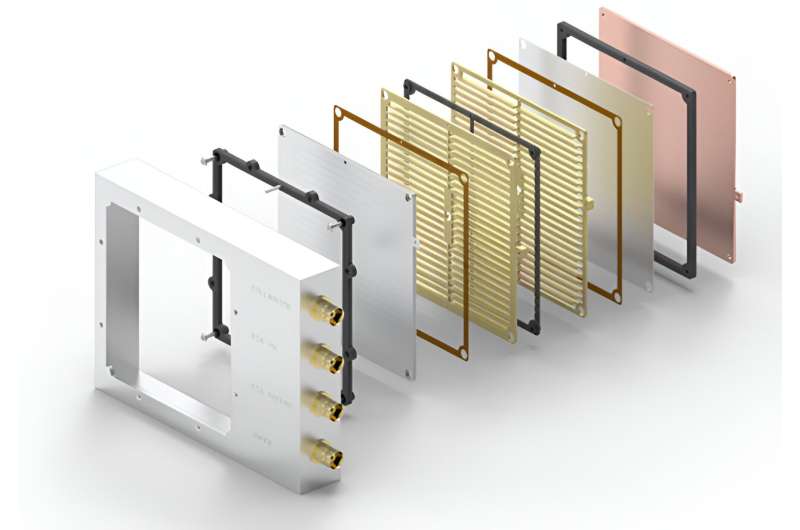This article has been reviewed according to Science X's editorial process and policies. Editors have highlighted the following attributes while ensuring the content's credibility:
fact-checked
trusted source
proofread
New tech monitors local space weather and provides real-time data

Peaceful though it may seem from Earth, space is beset by "weather" that can prove perilous for the sensitive—and expensive—technology aboard the spacecraft and satellites increasingly populating the realms outside our atmosphere.
To meet that challenge, Los Alamos National Laboratory researchers have developed the Compact Space Plasma Analyzer, a small and cost-efficient space sensor capable of measuring space weather, which will help protect technology in orbit.
"Space weather, which is made up of charged particles from the sun, presents a range of challenges concerning the design, development, and operation of satellites and spacecraft," said Carlos Maldonado, principal investigator of the Compact Space Plasma Analyzer and a researcher in the Lab's Space Science and Applications group.
"Of particular interest to the space community are the interactions between space systems operating in plasma environments, which can lead to potentially hazardous levels of differential charging and cause interference for GPS and communication signals."
A long-standing goal in the space weather community is to advance the capability to predict space weather events days in advance, in the same way that terrestrial weather forecasting enables one to anticipate a week of sunshine or snow.
Recent years have seen tremendous growth in satellite constellations for scientific, commercial and government applications. While current space weather instruments provide a lot of timely data, the data production cycle is long and expensive. Current instruments also require complex assembly efforts in addition to requiring larger, heavier, and more powerful operational support systems.
As a result, there has been an increased demand for miniaturized instruments capable of providing critical, real-time data with minimal mass, volume, and power consumption requirements, which is why the Los Alamos team created the Compact Space Plasma Analyzer.
Motivated by advances in CubeSats and fiscal constraints on spacecraft design and launch, Los Alamos' low-cost, rugged sensor was developed to provide real-time space weather monitoring, support spacecraft anomaly resolution, and provide valuable data concerning the local space environment and spacecraft charge, which is a direct result of charged particle interactions with spacecraft materials.
The compact analyzer can be implemented as a primary payload on CubeSats or as an auxiliary payload on larger vehicles. This enables the deployment of constellations of space weather sensors that can obtain multipoint measurements of the space environment as a function of spatial and temporal phenomena. The deployment of such a constellation has the potential to improve our understanding of space weather fundamentally.
"Space weather prediction enables potential cost savings on the order of hundreds of millions for fields ranging from spacecraft operations to aviation to ground-based power grids," Maldonado said.
The Compact Space Plasma Analyzer can also provide an increased understanding of the physical phenomena and processes of solar wind, magnetospheric and ionospheric science, local space weather forecasting, and spacecraft anomaly resolution.
Provided by Los Alamos National Laboratory





















